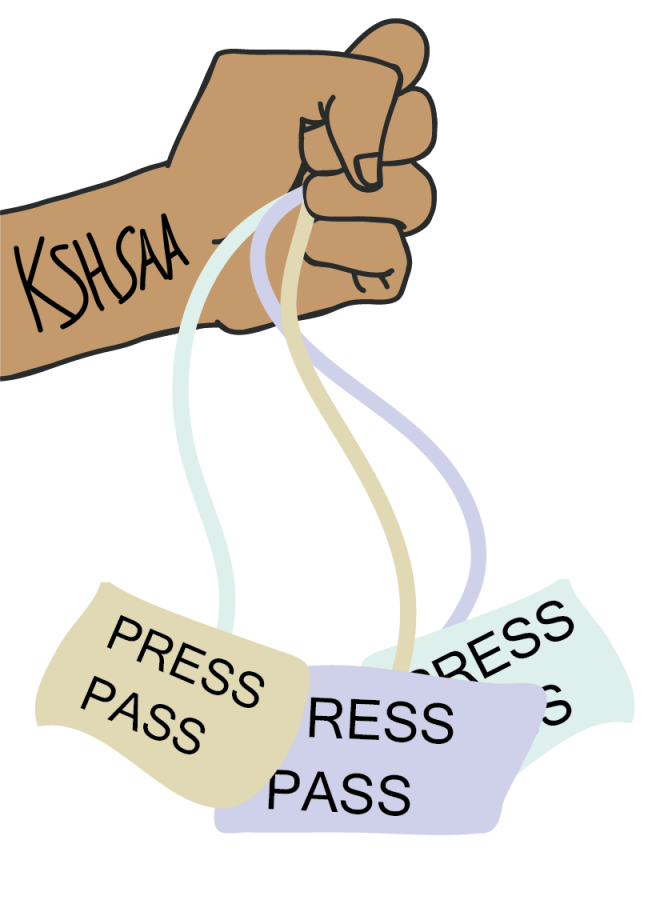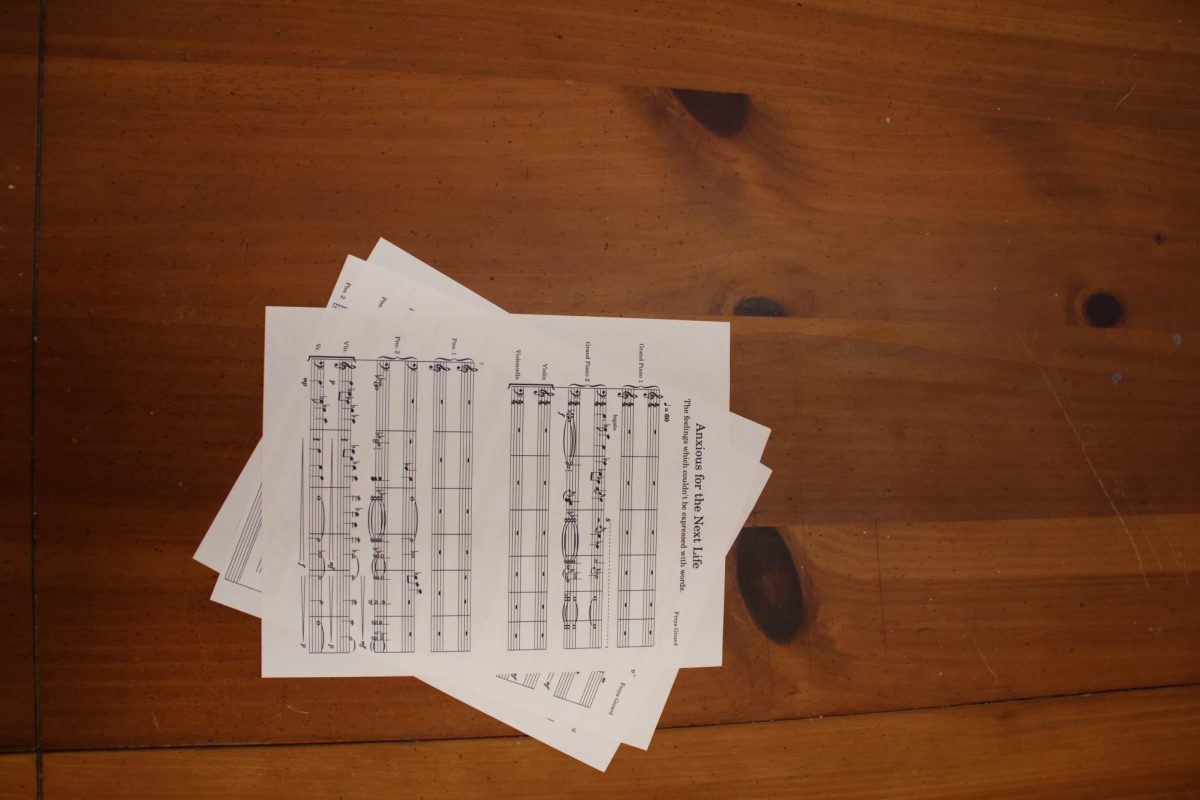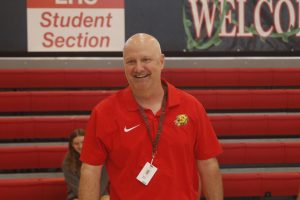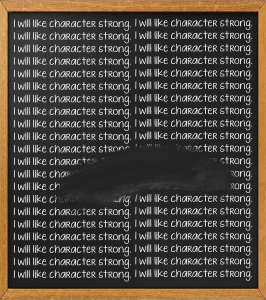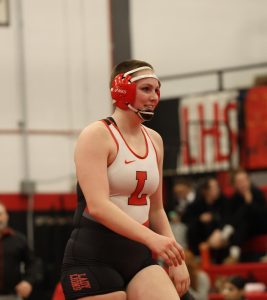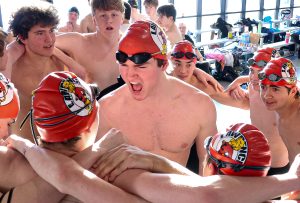KSHSAA unaccommodating of student press
Staff members handicapped by unnecessary restriction, undermining journalistic education
April 13, 2015
Alongside the team benches at the state basketball championship sat anywhere from 20 to 30 media workers from across the state.
But some vital media members were in short supply: high school reporters.
Although student press is a major component to tournament coverage and the platform most accessible to students and parents, the Kansas High School Activities Association is stingy when it comes to admitting student journalists. They make covering games significantly more difficult and undermine the educational value and importance of student press.
Unlike the spectators in line to buy tickets at the Charles Koch Arena box office, we were not there to just watch the game. We came with bags of heavy equipment and tight deadlines.
For our efforts, we were alloted two floor passes for our photographers, although they still had to pay admission — unlike other members of the press. Luckily for them, they had plenty of room to move about the endlines to get shots, since the sidelines were nearly vacant.
At college games, the only other events held at Koch Arena, the floor is packed with media personnel. Photographers are often stacked two-deep on the endlines.
Mike Yoder is the senior photographer for the Lawrence Journal World, one of the news outlets that covered the event. He said most professional news sources only credential one or two photographers and reporters for high school events, but students should be given more access.
“For high school events…there should be more accommodation made for student journalists,” he said.
Yoder pointed out that limiting press credentials makes sense to avoid crowds around the sidelines.
At state, that was not the case. A few other photographers were on the floor shooting but there was no reason that we couldn’t have all six staff members down there. We were pointlessly denied a third pass for our videographer to shoot, which made getting footage very difficult.
We were told our videographer could share one of the press passes, but that made little sense, since everyone was there to cover the same game.
The writing staff had our own issues. Since we weren’t permitted to be in the press area, we sat in the stands. Initially, although not ideal, it worked. However once the student section moved in, teetering a tablet on my lap while trying to finish halftime reports became difficult as the backs of our chairs were slammed every time the Lions were on defense.
This was an unnecessary struggle. There were four tables outfitted for the media on the sidelines with at least 20 vacant seats. Since we were doing the exact same thing those reporters were doing, why were we not permitted the same access?
As a student-journalist, I find it difficult to understand how KSHSAA — a group that understands its mission to support student athletes — does not give us access to our own events and support our student publications. It seems rather contrary to their purpose.
From 10 a.m. that Friday morning through the final game against Wichita East, six staff members from The Budget, live-tweet play-by-play coverage of each game, published nine full-scale stories and reports, and posted five multimedia stories. We worked nearly non-stop filming, reporting, writing and editing content.
We did our job as a news publication and had a lot of fun while we were down there, but we clearly put work into covering the event and not having the support of KSHSAA was not only a handicap but also undermined our work.
KSHSAA said that giving two press passes to each school is just their policy.
“The KSHSAA policy for school media is that each school is granted two school media passes to use for students like yourself,” KSHSAA sports communications representative Jeremy Holaday said. “We grant two passes per school for the possible 16 schools that could qualify for the state basketball tournament to ensure that every school is allowed the same opportunity.”
This policy does not safeguard equality. Sixteen schools playing in the state tournament in Wichita does not mean there will be 32 high school journalists on the court. Students will only cover their own games, so as it stands, the policy allows four students on the court — well below capacity.
To ensure all schools are accommodated, KSHSAA needs to reconsider its press credentialing procedures to better include student reporters and photographers.
We believe the best solution may come out of cooperation with the Kansas Scholastic Press Association, the state’s high school journalism authority. Surely, the two organizations can come up with a policy that better addresses needs of student press.
After all, the goal should be to make sure all students can do their best work on and slightly to the side of the court.



